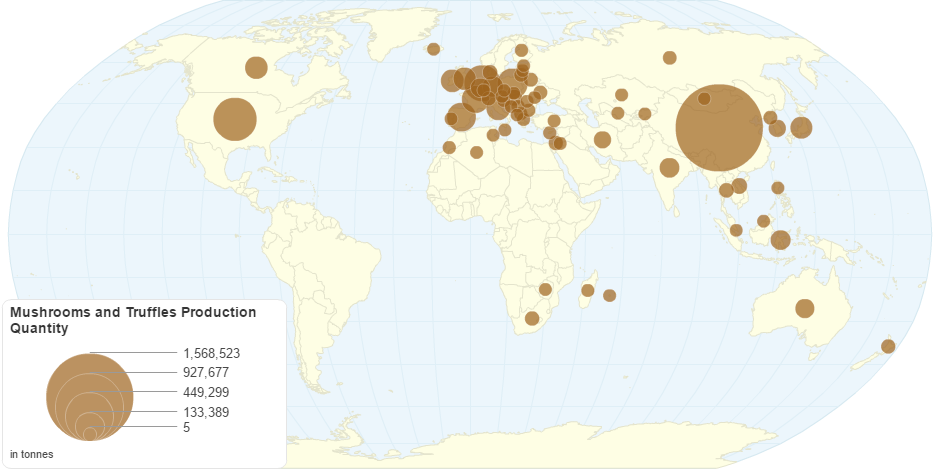This chart shows Mushrooms and Truffles Production Quantity by Country.
A mushroom is the fleshy, spore-bearing fruiting body of a fungus, typically produced above ground on soil or on its food source. "Mushroom" describes a variety of gilled fungi, with or without stems, and the term is used even more generally, to describe both the fleshy fruiting bodies of some Ascomycota and the woody or leathery fruiting bodies of some Basidiomycota, depending upon the context of the word.
A mushroom develops from a nodule, or pinhead, less than two millimeters in diameter, called a primordium, which is typically found on or near the surface of the substrate. It is formed within the mycelium, the mass of threadlike hyphae that make up the fungus.
The cultivated mushroom as well as the common field mushroom initially form a minute fruiting body, referred to as the pin stage because of their small size. Slightly expanded they are called buttons, once again because of the relative size and shape. Once such stages are formed, the mushroom can rapidly pull in water from its mycelium and expand, mainly by inflating preformed cells that took several days to form in the primordia.
Raw brown mushrooms are 92% water, 4% carbohydrates, 2% protein and less than 1% fat. In a 100 gram amount, raw mushrooms provide 22 calories and are a rich source of B vitamins, such as riboflavin, niacin and pantothenic acid, selenium and copper, and a moderate source of phosphorus, zinc and potassium . Vitamin C and sodium have no or minimal content.
9 years ago

